The lenses obviously should fit your style and give you should stay comfortable during the day. But here in this article, you will get the technical information on what you should look for in your frame when buying progressive lenses.
- Get the width right The frame should not be wider than your face
- Get the angles right 8° of pantoscopic tilt and 6° of wrap angle
- Get the height of the frame right, 10mm above your pupil and 18mm under your pupil
- Choose the optimal frame for your prescription to make the lens aesthetically pleasing
- Check the weight
Get the Width Right the Frame Should Not Be Wider Than Your Face
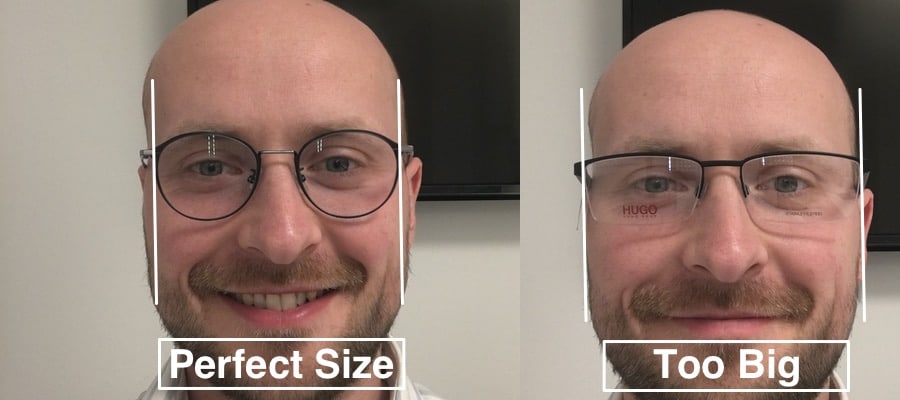
Getting the width of the frame is crucial for your progressive glasses. The reason is mirroring effects you can avoid on the back surface on your progressive lenses. To me, this is one of the biggest nerve-wracking things if you constantly notice a glare from headlights or the surrounding on your back in general in your lenses.
To avoid this is actually pretty easy. The widest part of the frame for your progressive lenses should not be wider than the widest part of your face. In the picture above you can see the example for that on the left side. Here the frame ends with my face and the lenses are a little bit smaller than my face.
With this size, I have a really wide field of view without having those disturbing reflexes you can see below. Also in the picture above on the right side, it has such a big frame that makes my pupilar distance seem to be smaller than it actually is.
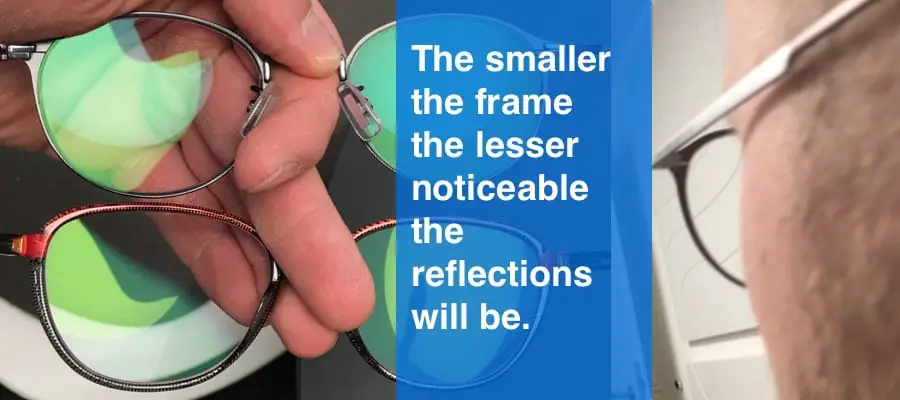
Get the Angles Right 8° of Pantoscopic Tilt and 6° of Wrap Angle
Choosing a frame that somehow sits very tilted in your face or which is really wrapped could mean you need more expensive progressive lenses as they usually provide the optician more options to fit them into complicated frames. For some people, it is important to squeeze the best possible outcome out of mid-class progressive lenses. Then you should avoid special looking frames.
Here in the picture below you can see what I mean by those angles. Most of the progressive lenses on the market are made for a frame with averaged lengths and angles. In a lot of cases, this is ok but if the frame sits in another position in one angle or misplaced from this averaged length. You will get a less ideal vision.

In most cases, the blurry field gets a little more dominant with every angle and millimeter the current adjustment is away for the so-called averaged value. This is true for every lens out their not only progressives. But a poorly adjusted progressive lens definitely leads to problems faster compared to a single vision lens. As your prescription gets higher you can see a misplaced lens even faster too.
The reason is the prescription is measured in a certain adjustment. If you move your lenses further away or tilt them 10 to 15° in front of your eyes you can see that your vision will get compromised. Because with that changed adjustment of a progressive lens, the prescription oftentimes must be changed to the new fit of the frame. Otherwise, this could happen to your sharp field of view which is marked white.
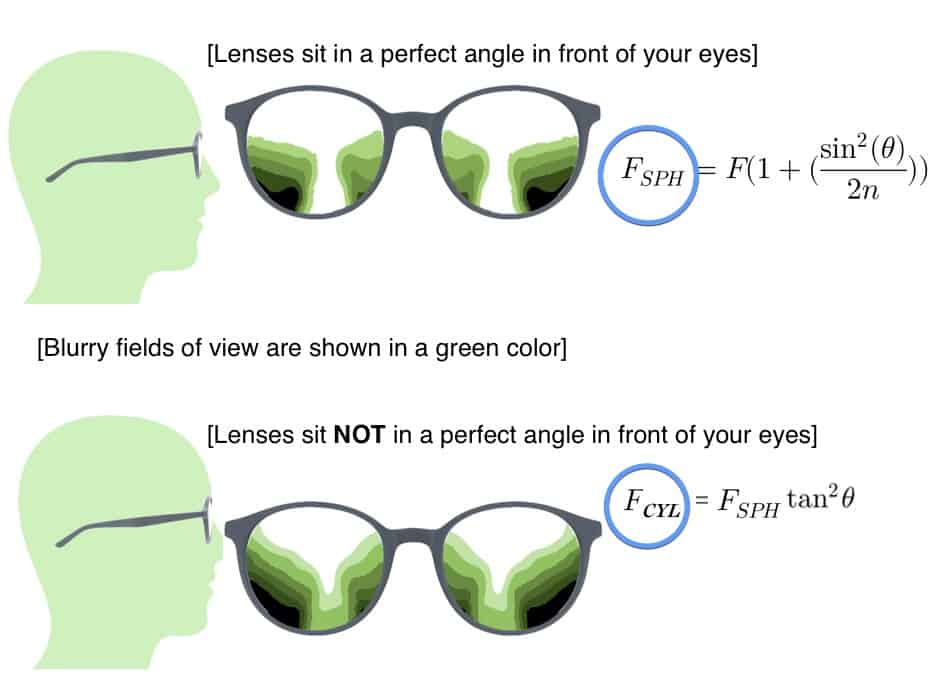
Why Is That Important to Choose the Best Frame for Your Progressive Lenses?
The reason the frame should fit you and the progressive lenses best are the blue circled formulas above. It would lead to another optimal prescription for you. Or the angles and distances in the setup of your frame can be changed. Oftentimes this is possible if the parts are more on the thinner side on the frame you want to choose.
As you can see in the example below the thinner temples on the side could be easily modified to the desired angle. But the thicker titanium frame or the wooden frame just sits the way they sit. It is simply not possible to change the angles here.
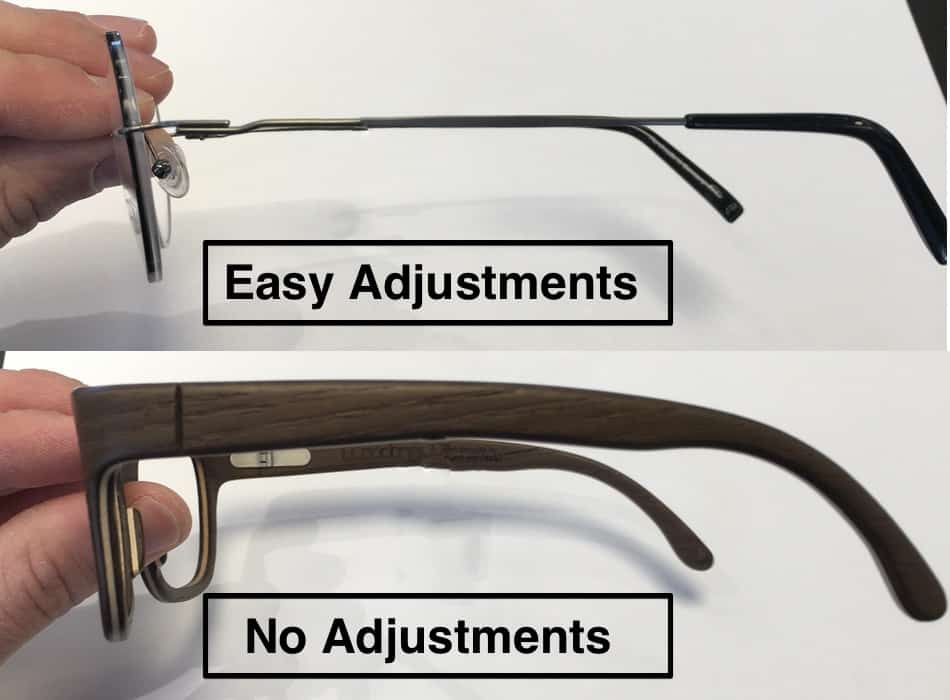
Oftentimes if the pantoscopic tilt the lenses must be repositioned in a little bit higher or lower setting. The rule of thumb here is for every 2° of tilt the lenses must be repositioned for 1mm higher or lower. This is only possible afterward if your desired frame has adjustable nose pads. That is why I recommend them for the best frames for progressive lenses especially if they are not the higher end ones.
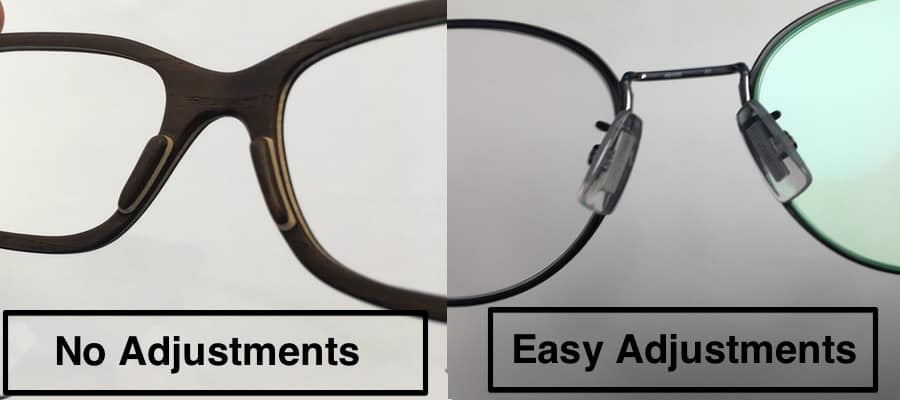
Get the Height of the Frame Right, 10mm Above Your Pupil and 18mm Under Your Pupil
In progressive lenses, you have certain areas for distance vision, the mid-distance, and reading. So it is wise to know what the required sizes are if you are looking for the ideal frame for your progressive lenses. Think this way to find the best frame for your progressive lenses. You should not be restricted by the upper rim of the frame as you look around.
That´s why I recommend the 10mm of distance from the point you are looking through the lenses into the distance to the upper end of the lens. The lower part of 18mm down from the point you are looking through the lenses into the distance is to provide you with enough space to fit the corridor of your progressive lenses in. This corridor gives you the transitions from your distance vision into the reading zone.
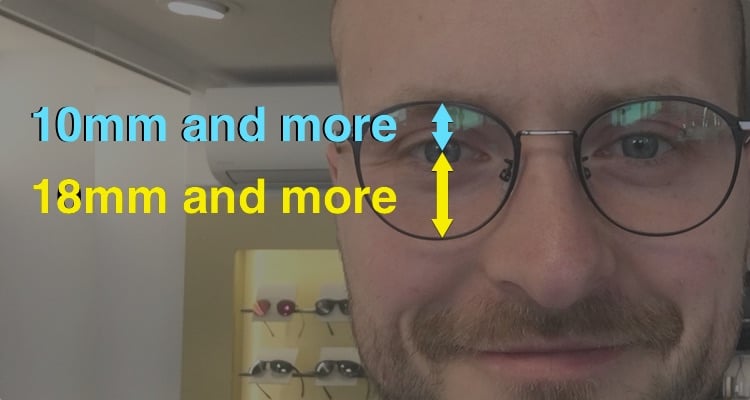
Having that said I need to tell that you could progressive lenses theoretically fit into nearly every frame. But if you “squeeze” your prescription into a frame with a lot less height you might be having trouble in the mid-distance part of your progressive lenses. Because this is always the part that gets stretched if the corridor is longer and squeezed if it is shorter.
A piece of additional information regarding the corridor length is the wider field of view you want the longer the corridor has to be.
Choose the Optimal Frame for Your Prescription to Make Your Progressive Lenses Aesthetically Pleasing
When will the lenses be thin? When will the lenses be too thick? That is really subjective and an individual thing. Generally speaking the recommendation I gave above to counter the mirroring effects is also great for you to look good. Because the frame for your progressive lenses is too wide you will probably have an unnatural look.
The reason is a magnifying effect that is noticeable if you have more than +3 DPT of hyperopia or a miniaturization effect if your myopia exceeds -3 DPT and your frame of choice is pretty big.
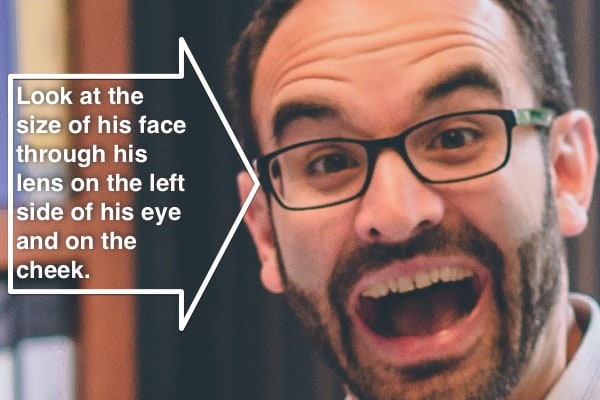
So if your prescription is a little higher go with the rule of width I gave you above. If your prescription is higher than 7 DPT than my recommendation for you is to go even a little bit smaller with the width of the lenses on the sides.
Check the Weight of Your Frame for Your Progressive Lenses
Most people do not think about this point when they shop for the best frame for progressive lenses first. But then as they compare different frames and try them on how they feel they tend to prefer a certain weight. I say it like that because some of my customers want to have a little heavier frame. For me, the frame always feels comfier if it is as light as possible.
If they do not feel good on your nose right from the first moment it probably is not worth considering them buying. Because the more you wear them the faster you get used to them. So they should feel just comfy. Otherwise, you will not wear them for long hours.
The best frame for progressive lenses I had so far weighs 16g. Which is extremely light. It is made out of Titanium. Other light materials for frames are Ultem, TR90, SPX, and wood.
I hope this article makes it easier for you to find the best frame for progressive lenses. I wish you a great day.
